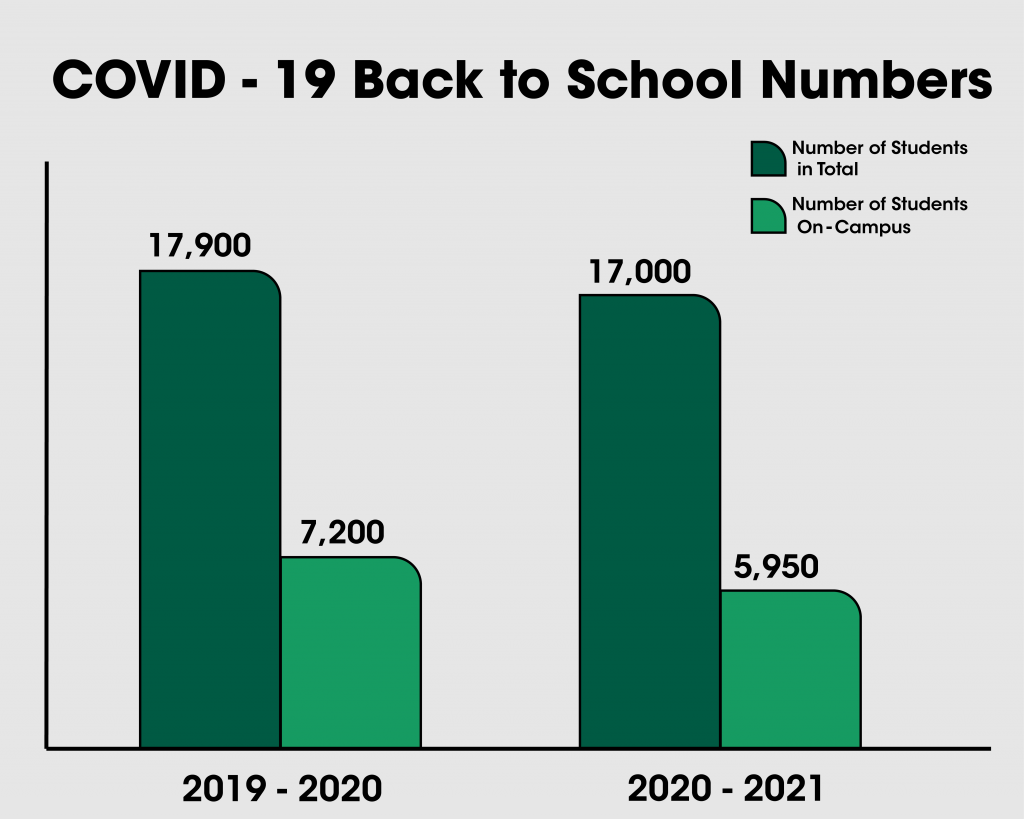
Across the country, universities have been working to create action plans and procedures to contain the increasing number of coronavirus cases as campuses reopen.
Approximately 83 percent of students returned back to campus for the upcoming fall semester as Binghamton University begins its reopening process.
Ryan Yarosh, senior director of media and public relations at BU, said the University had originally estimated the capacity of residence halls and removed all triple rooms to convert them to doubles.
“Based on registration information received this week, we now know that the number of student residents on campus this year will decline from our planned capacity of 7,200 to an expected 5,950,” Yarosh said.
BU President Harvey Stenger spoke about the success of student testing for on-campus students at a press conference on Wednesday.
“We just accomplished what people thought was impossible,” Stenger said. “We are the only SUNY campus to test all of their students the day that they moved in so they could be sure they were living in a dormitory with all negatively tested students, and a lot of universities didn’t do that because they thought it was impossible, but we did it.”
According to Stenger, the campus reported 30 positive tests over a seven-day move-in period. Of those students, 25 chose to isolate at home, four are currently in the isolation dormitory and one off-campus student will be isolating following county guidelines. BU has been continually updating their COVID-19 Daily Dashboard to showcase negative and positive COVID-19 tests of on-campus students.
The Old University Union will start surveillance testing approximately 1,000 students a week beginning next Wednesday to sample the student population in a selected way to find infected students. Once a student who is infected is found, the isolation process will begin as well as contact-tracing, symptom-checking and testing.
“We want to have everyone’s health at the highest level of priority,” Stenger said. “For example, students that moved back on campus actually had a lower positive rate of [COVID-19] than Broome County, so we are actually diluting the infection with students that are not infected.“
Stephen Ortiz, a collegiate professor of College-in-the-Woods and associate professor of history, was very optimistic about the handling of campus reopening and expressed how many people worked together to smooth out the move-in process to ensure that the campus community remained safe during the pandemic.
“My expectations for the move-in process were relatively high given how tirelessly the entire campus community worked this summer to make it happen,” Ortiz said. “So many people were involved in creating an entirely new process that both met all of the public health needs of everyone involved—students, parents, faculty and staff—and also tried to do so in a way that maintained a sense of welcome and excitement for first-year students and their families.”
Many students are feeling as if the University took too many risks and failed to effectively ensure the safety of students in reopening, including a resident assistant (RA) who wished to remain anonymous.
“Campus reopening, in my opinion, has already proven to be a mistake,” they wrote. “Each night of move-in there have been groups of 50-100 people on the [Peace Quad] without masks on, and, so far, the police haven’t helped us break the crowds up so we have to do it all ourselves. [RAs] have turned into a much larger job than I think we all expected, and it’s put quite a burden on our health.”
Kaitlin Rando, a senior majoring in sociology, said that her choice to stay home this year was mainly due to concerns of keeping her family and friends safe.
“I decided to stay home because I felt like it was the safest thing to do in order to keep my family and me safe,” Rando said. “I feel like the University should have had classes online until October, as it would give time for cases to decrease. It will be an interesting semester for sure, but we can do it.”
Luke McNamara, a junior majoring in history, said the food options on campus are the biggest disappointment in the transition to on-campus living.
“I definitely feel safe living on campus, but the food options are really a letdown this year, especially the limited Marketplace menus,” McNamara said. “I’m having a tough time finding food that I can eat. I think everything so far has been well done, but I’m still struggling to justify paying almost full tuition.”


